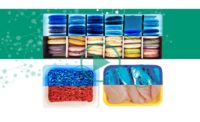New data shows growing acceptance of a variety of wine closures

Informative new data shows growing acceptance of a variety wine closures amongst trade and consumers, according to a recent qualitative research conducted by Evan Goldstein, MS and Full Circle Wine Solutions and commissioned by G3 (www.g3enterprises.com), as part of their ongoing research and development with wine closures.
Participants of the study were questioned on their perceptions and preferences towards different types of closures, including DIAM closures, natural corks, synthetics, and glass closures across a range of categories: emotional acceptance, functionality, impact on taste, and quality perception. Across these categories, DIAM, maintained a positive perception.
In fact, DIAM outperforming screw caps and natural corks closures across a variety of price points, including the $40 and over category (79%) that is traditionally dominated by natural cork (89%).
DIAM closures maintained a consistently positive perception, not only in the category of aromatic, young, white wines (82%) but also performing well in the category of heavy reds (89%).
In terms of ageability, DIAM and traditional cork scored high for wines aging over 10 years. In addition, DIAM cork closures did exceptionally well in the categories of wine meant to age for 3-5 years and 5-10 years.
The study also included a side-by-side bottle blind tasting across 36 bottles of wine to demonstrate a consistency in bottled wine quality between natural cork and DIAM closures. The results showed that 2% of the wine samples under the natural cork samples were found tainted vs. 0% of wine samples under DIAM closures.
“What we found most compelling was a growing desire for more education and sharable data on developments within the closure industry,” says Goldstein. “With consumers more accepting than ever of a variety of wine closures, the professionals we spoke to are eager to see more research on ‘cork taint’ as well as how these closures may aid long term bottle aging.”
“This exercise was eye opening for me regarding advancements in the closure industry,” says Yoon Ha, beverage director of San Francisco’s Benu Restaurant and newly-minted master sommelier. “My experience with high-end and well educated wine consumers is that they care more about the condition of the wine than the medium of the closure. As our industry embraces non-traditional closures, perhaps our consumers will do the same.”
Other Key Findings:
- Participants found no obvious differentiation between DIAM and natural cork
- When asked to describe alternative closures, screw caps and synthetic cork were most prevalently cited
- Participants placed high trust in wine producer’s choice of closures.
- Oxygen management in the bottle for long term aging in wines is a key concern for on-and-off premise
- The greatest factor working against non-traditional wine closures is lack of exposure and knowledge of how these closures can improve wine quality.
Survey participants included a range of A-list influencers across different on-and-off premise segments of the San Francisco market, with a main goal of determining if and how closures affect the decision making process for buyers and sommeliers. Given these encouraging results, G3 and DIAM will partner to present a research symposium in the United States during the spring of 2013.
Looking for a reprint of this article?
From high-res PDFs to custom plaques, order your copy today!







